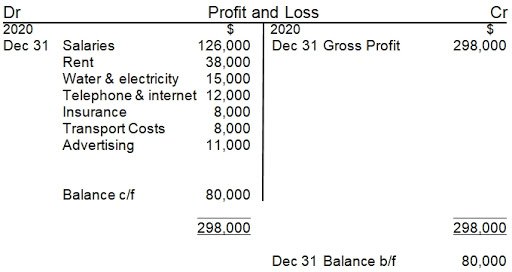Back to: AGRICULTURAL SCIENCE JSS3
Welcome to class!
Today, we’re going to explore something really important in business: the Profit and Loss Account. It’s like a report card that tells you if your business, like a farm or a shop, is making money or losing it. This is something every good business person, even a young one like you, should know about. Let’s make this class fun and easy to understand!
Profit and Loss Account

CONTENT
- Meaning of profit and loss account
- Importance of profit and loss account
- Principles of profit and loss account
- Calculations on profit and loss account
Profit and Loss Account
What is a Profit and Loss Account?
Imagine you have a lemonade stand. At the end of the day, you want to know if you made more money selling lemonade than it cost to make it. That’s what a Profit and Loss Account does! It’s a summary showing money earned (sales) and money spent (expenses) over a period, usually a year. For a farm, it helps farmers understand if their farming is profitable.
What is the Importance of Profit and Loss Account?
- It’s like a health check for the farm. If the farm is making money (profit), it’s healthy. If it’s losing money (loss), it might need some changes.
- It shows how well the farm did in a year. Did it sell lots of eggs or milk? Did it spend a lot on animal food or repairs?
- It helps in planning. If something doesn’t work well this year, the farmer can try something different next year.
Principles of Profit and Loss Account
- We record expenses (like seed, fertilizer, animal food) on the left side. This side is called the ‘debit’ side.
- Sales and income (like money from selling crops or milk) go on the right side, known as the ‘credit’ side.
- We also note the value of things we have at the beginning and end of the year. For example, how many chickens we start and end the year with.
Let’s Do a Simple Calculation!
Imagine Segun’s farm in 2023. He spent money on chicken feed and medicine but also made money selling eggs and chickens. How did he do?
- Cost of chicken feed: ₦500
- Medicine for chickens: ₦200
- Money from selling eggs: ₦2000
- Eggs used at home: ₦200
- Loss from chickens getting sick: ₦300
- Value of chickens left at the end of the year: ₦600
- Paying people who helped on the farm: ₦400
- Money from selling old chickens: ₦1000
- Cost of taking products to market: ₦300
- Money set aside for things getting old (depreciation): ₦200
Now, let’s add up all the money Segun spent and all the money he made. We find that Segun made a profit of ₦1600! Great job, Segun!

General Evaluation
- What is a farm account?
- Why do we use a cash analysis account in a farm?
- What information does a farm income statement give us?
- Can you explain what a profit and loss account is in your own words?
- What are some key principles of a profit and loss account?
Reading Assignment
Check out “Junior Secondary Agriculture for Nigeria Schools, Book 3, Chapter 4, Pages 32-34.” It has great examples and explanations about farm accounts. You’ll learn how farmers keep track of their money, which is super important for a successful farm.
Theory Questions
- In simple terms, what is a profit and loss account?
- Can you list and explain three principles of keeping a profit and loss account?
We hope you found today’s class helpful and interesting! If you have any questions, just ask in the comments below. We’re here to help and will respond as soon as we can. Keep up the great learning and see you in the next class! 🌱

Best lesson plan
Thank you for the review!
For more class notes, engaging videos, and homework assistance, just download our Mobile App at https://play.google.com/store/apps/details?id=com.afrilearn. It’s packed with resources to help you succeed🌟